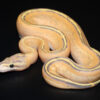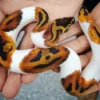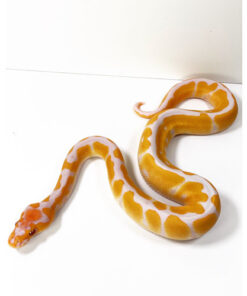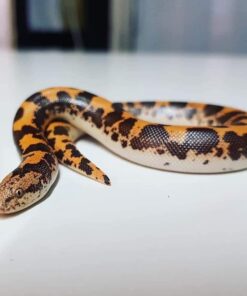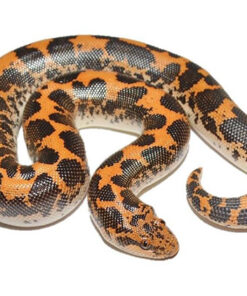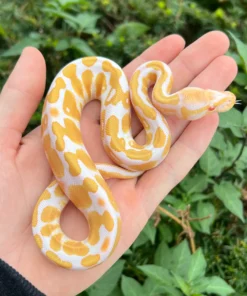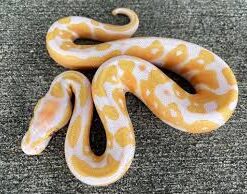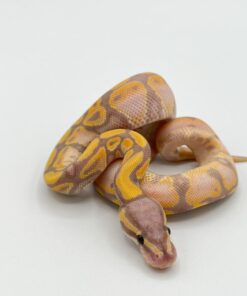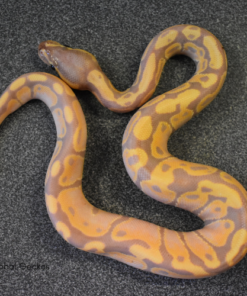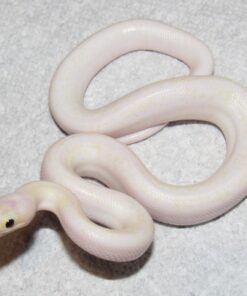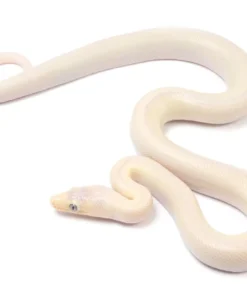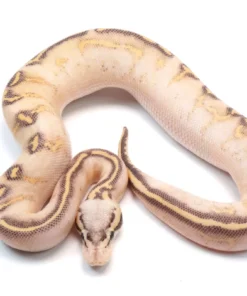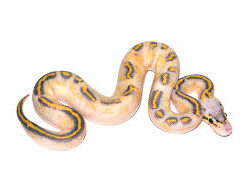$699.00 Original price was: $699.00.$399.00Current price is: $399.00.
Gender: Both Male And Female Available
Weight: Approximately 50-160 grams
Diet: Live and Frozen/Thawed Medium Mice
Image: Representative Image
Breed: Ball Python
Ball Pythons For Sale
SKU: N/A
Category: EXOTIC SNAKES FOR SALE
Tags: baby albino ball pythons for sale, ball python for sale, ball python for sale near me, ball pythons for sale, ball pythons for sale cheap, ball pythons for sale near me, ball pythons for sale online, buy ball python, buy ball python online, buy ball pythons, buy ball pythons online, fire ball pythons for sale, pied ball python for sale
Baby Pied Ball Python For Sale: A Unique and Fascinating Pet for Reptile Lovers
If you’re in the market for a truly eye-catching and unique pet snake, look no further than the *Pied Ball Python*. Known for its distinctive pattern and coloring, this morph of the popular ball python species has captured the hearts of reptile enthusiasts around the world. The *Pied Ball Python* boasts irregular patches of white skin alongside normal pigmented patterns, making each snake truly one-of-a-kind.
In this comprehensive guide, we’ll explore everything you need to know about owning a *baby pied ball python*, from care and habitat setup to feeding and handling. We’ll also cover the *pied ball python price* and tips for finding a *baby pied ball python for sale*. Whether you’re a seasoned reptile enthusiast or a beginner looking for your first snake, the *Pied Ball Python* is an excellent choice that promises years of fascination and companionship.
What is a Pied Ball Python?
The *Pied Ball Python*, short for “Piebald Ball Python,” is a visually stunning morph of the *Ball Python* (*Python regius*), a species native to the grasslands and savannas of West and Central Africa. This particular morph is the result of a recessive genetic mutation known as piebaldism, which creates large patches of unpigmented (white) skin alongside normal color and pattern areas.
What makes the *Pied Ball Python* so special is its unique appearance. No two pied ball pythons have the exact same pattern of white and pigmented areas, making each individual snake a work of art. The amount of white versus colored patches can vary significantly, with some pied ball pythons having very little white and others having large sections of their body completely unpigmented.
The pied morph was first bred and introduced into the reptile hobby in the 1990s, and it quickly became one of the most sought-after ball python morphs due to its stunning and unpredictable patterns.
Appearance and Characteristics of Pied Ball Pythons
The most defining characteristic of the *Pied Ball Python* is its unique color pattern. The pied gene causes irregular patches of bright white skin to appear alongside the normal dark brown and black patterns seen in typical ball pythons. Here’s a breakdown of their key traits:
– **Pattern and Color**: As a result of the piebald gene, *Pied Ball Pythons* have sections of their skin that completely lack pigmentation, resulting in bright white patches. The rest of their body features the typical ball python pattern, which consists of dark brown, black, and sometimes gold tones.
– **Variability**: Each *Pied Ball Python* has a unique pattern of white and colored skin, which means no two pied ball pythons look exactly alike. This variability is one of the reasons they are so popular among collectors.
– **Size**: Like other ball pythons, *Pied Ball Pythons* grow to a manageable size, with adults typically reaching between 3 and 5 feet in length. Males tend to be smaller than females, but both genders are relatively easy to handle.
– **Temperament**: Ball pythons, including pieds, are known for their calm and docile temperament. They are easy to handle and rarely show signs of aggression, making them an ideal pet for beginners and experienced keepers alike.
Pied Ball Python Care Requirements
When it comes to caring for a *baby pied ball python*, their needs are relatively simple and straightforward, making them a great choice for novice snake owners. However, it’s essential to set up their habitat properly and provide them with the right environment to ensure they thrive.
Housing and Enclosure Setup
Creating the right habitat for your *Pied Ball Python* is key to keeping it healthy and happy. Here’s what you need to know about setting up the perfect enclosure:
– **Tank Size**: A baby *pied ball python* can comfortably live in a 20-gallon enclosure, but as it grows, you’ll want to upgrade to a 40-gallon tank to give it enough space. Adults typically need an enclosure that is around 3 to 4 feet long.
– **Substrate**: There are a variety of substrates that work well for ball pythons, including aspen bedding, cypress mulch, and coconut husk. These substrates help maintain humidity levels and provide a comfortable surface for your snake to move around on. Avoid using substrates like cedar or pine, as these can be harmful to reptiles.
– **Hides and Decorations**: Ball pythons are shy and like to have places to hide. Be sure to provide at least two hiding spots in their enclosure—one on the warm side and one on the cool side. You can use commercially available reptile hides or create your own using logs or small boxes. Additionally, adding branches or artificial plants can make the enclosure more visually appealing and offer climbing opportunities.
– **Temperature and Heating**: Ball pythons are cold-blooded, meaning they rely on their environment to regulate their body temperature. It’s important to create a temperature gradient in the enclosure, with one side kept between 88-92°F (warm side) and the other between 75-80°F (cool side). A heat mat, ceramic heat emitter, or heat lamp can be used to maintain the proper temperatures, but make sure to use a thermostat to prevent overheating.
– **Humidity**: Ball pythons need a moderate level of humidity to stay healthy and shed their skin properly. Aim for a humidity level of 50-60%. This can be achieved by misting the enclosure regularly and using a substrate that retains moisture. During shedding periods, slightly increasing the humidity can help your snake shed its skin more easily.
Feeding
*Pied Ball Pythons* are carnivores and typically eat rodents. Their feeding requirements are relatively simple, but it’s important to feed them appropriately sized prey to avoid health issues.
– **What to Feed**: A baby *pied ball python* will start by eating pinky mice or small fuzzy mice. As the snake grows, you’ll need to increase the size of the prey. Adult pied ball pythons typically eat adult mice or small rats.
– **Feeding Frequency**: Baby pied ball pythons should be fed every 5-7 days, while adult ball pythons can be fed every 7-10 days. Always make sure the prey size is appropriate for the snake’s size—about the same width as the widest part of the snake’s body.
– **Live vs. Frozen/Thawed**: While ball pythons can eat live prey, many owners opt to feed frozen/thawed mice or rats, which are easier to store and generally safer for the snake. Live prey can sometimes injure the snake during feeding.
Shedding and Hydration
Like all reptiles, *Pied Ball Pythons* shed their skin periodically as they grow. You’ll know your snake is getting ready to shed when its eyes become cloudy and its colors look dull. During this time, it’s important to increase the humidity in the enclosure slightly to help with the shedding process.
Providing a water dish large enough for your snake to soak in can also help with hydration and shedding. Make sure the water is clean and fresh at all times.
Pied Ball Python Price and Buying Considerations
If you’ve decided that a *Pied Ball Python* is the right pet for you, you’ll likely start looking for a *baby pied ball python for sale*. When searching for your new snake, it’s important to consider factors such as the breeder’s reputation, the snake’s health, and the overall cost.
Pied Ball Python Price
The *pied ball python price* can vary depending on several factors, including the snake’s genetics, age, and the breeder’s reputation. Generally speaking, a *baby pied ball python for sale* will cost anywhere between $300 to $500, though some pieds with more unique patterns or rarer genetics can command higher prices.
It’s worth noting that the more white a *Pied Ball Python* has, the higher the price tends to be. Snakes with minimal pattern and mostly white coloration are often considered more desirable and thus more expensive.
Where to Buy a Pied Ball Python
When looking for a *pied ball python for sale*, it’s important to buy from a reputable breeder or pet store. Reputable breeders take the time to ensure their snakes are healthy, properly housed, and well-cared for before being sold. They’ll also be able to provide information on the snake’s genetics, feeding habits, and any special care requirements.
Many breeders and reptile shops now offer the option to buy *pied ball pythons* online. If you choose to go this route, make sure the seller has a good reputation, and check for reviews or testimonials from other buyers.
Temperament and Handling
One of the most attractive features of the *Pied Ball Python*, and ball pythons in general, is their calm and docile temperament. These snakes are known for being easy to handle and rarely display aggression, making them a great choice for both beginners and experienced reptile keepers.
When handling your *baby pied ball python*, it’s important to be gentle and give the snake time to adjust to its new surroundings. Start by handling your snake for short periods, and gradually increase the handling time as it becomes more comfortable with you. Avoid handling your snake immediately after feeding, as this can cause stress and lead to regurgitation.
Lifespan and Health
With proper care, *Pied Ball Pythons* can live for 20-30 years in captivity, making them a long-term commitment. They’re generally hardy snakes, but With proper care, *Pied Ball Pythons* can live for 20-30 years in captivity, making them a long-term commitment. They’re generally hardy snakes, but like all reptiles, there are a few health issues to keep an eye out for to ensure your snake stays healthy and happy.
Common Health Concerns
– **Respiratory Infections**: This can occur if your *pied ball python’s* enclosure isn’t kept at the proper temperature or humidity levels. Signs of a respiratory infection include wheezing, excess mucus, or open-mouth breathing. If you suspect your snake has a respiratory infection, it’s important to see a reptile veterinarian for treatment.
– **Mites**: External parasites like mites can sometimes affect reptiles, especially if they’ve come into contact with other snakes or been kept in poor conditions before you purchased them. Mites are visible as small black or red dots on your snake’s skin and can cause irritation. There are over-the-counter treatments available to help rid your snake of mites, but it’s also important to thoroughly clean and disinfect the enclosure.
– **Shedding Issues**: If the enclosure’s humidity is too low, your *pied ball python* may have difficulty shedding its skin properly. This can result in retained shed, particularly around the eyes. Increasing the humidity in the enclosure and providing a humidity box or soaking dish can help your snake shed more easily.
Maintaining the right environment and keeping an eye on your snake’s health is crucial for a long and healthy life. Regularly check your snake for any signs of illness or discomfort, and don’t hesitate to seek help from a reptile vet if something seems off.
Why Choose a Pied Ball Python?
So, why choose a *Pied Ball Python* as your next pet? Their stunning, one-of-a-kind appearance, manageable size, and calm temperament make them one of the most popular morphs in the ball python world. Whether you’re new to snake keeping or an experienced hobbyist, a *Pied Ball Python* offers a truly unique and rewarding experience.
– **Unique Appearance**: No two *Pied Ball Pythons* look exactly alike, and their beautiful white patches contrast beautifully with their normal-colored areas. Whether you prefer more white or less white, there’s a pied out there that will capture your heart.
– **Low Maintenance**: While they do have specific care requirements, *Pied Ball Pythons* are relatively low maintenance compared to other pets. They don’t need to be fed daily, don’t require constant attention, and are fairly hardy as long as their basic needs are met.
– **Beginner Friendly**: Ball pythons are known for their calm nature, and *Pied Ball Pythons* are no exception. They’re a great choice for beginner snake owners, as they’re easy to handle and adapt well to captivity.
– **Long Lifespan**: With the potential to live 20-30 years, owning a *Pied Ball Python* is a long-term commitment. This makes them a great choice for someone looking for a long-term pet that can be part of the family for many years to come.
Pied Ball Python Price: What to Expect
As mentioned earlier, the *pied ball python price* can vary depending on factors such as the amount of white on the snake, its age, and its genetic lineage. On average, you can expect to pay between $300 and $500 for a *baby pied ball python for sale*. However, the price can rise significantly for pieds with more white or rarer traits, sometimes reaching over $1,000 for high-end examples.
When considering the *pied ball python price*, keep in mind that you’re not just paying for the snake itself—you’re also investing in a long-term companion with unique beauty and an interesting personality. Additionally, it’s important to budget for the necessary equipment and setup, such as the enclosure, heating, substrate, and feeding supplies.
Where to Find a Baby Pied Ball Python for Sale
If you’re ready to add a *Pied Ball Python* to your family, the next step is finding a reputable breeder or pet store. When looking for a *baby pied ball python for sale*, it’s important to do your research to ensure you’re purchasing a healthy, well-cared-for snake.
– **Reputable Breeders**: One of the best places to find a *pied ball python for sale* is through a reputable breeder. Look for breeders with positive reviews, a history of producing healthy animals, and transparent communication about the snake’s genetics and care history. Many breeders also attend reptile expos, where you can meet them in person and see their animals before making a purchase.
– **Online Reptile Stores**: Another option is to buy from an online reptile store. Many trustworthy reptile retailers offer *baby pied ball pythons for sale* and can ship the snake safely to your door. Be sure to read reviews of the seller and ask questions about the snake’s health and care before purchasing.
– **Reptile Expos**: If you want to meet breeders face-to-face and see the snakes in person before buying, consider attending a reptile expo. These events are a great way to meet experienced breeders, ask questions, and find the perfect *pied ball python* for your collection.
Final Thoughts on Pied Ball Pythons
Owning a *Pied Ball Python* is a rewarding experience for reptile enthusiasts of all levels. From their stunning and unique appearance to their calm and manageable temperament, these snakes have become one of the most beloved morphs in the reptile world. Whether you’re looking for your first snake or adding to an existing collection, the *Pied Ball Python* is an excellent choice that will bring years of fascination and enjoyment.
When searching for a *baby pied ball python for sale*, it’s important to consider the *pied ball python price* and the care requirements that come with owning one of these amazing creatures. With the right setup, feeding routine, and attention to their health, your *Pied Ball Python* can thrive for decades, providing you with a loyal and beautiful companion.
So, if you’re ready to take the plunge and bring home a *Pied Ball Python*, start by finding a reputable breeder or pet store, and be prepared to welcome a one-of-a-kind reptile into your home. With its striking appearance and gentle personality, a *Pied Ball Python* will quickly become a cherished member of your reptile family.
| sex | Female, Male |
|---|
Related products
Sale!
EXOTIC SNAKES FOR SALE
Sale!
EXOTIC SNAKES FOR SALE
Sale!
EXOTIC SNAKES FOR SALE
Sale!

